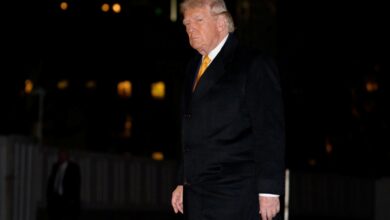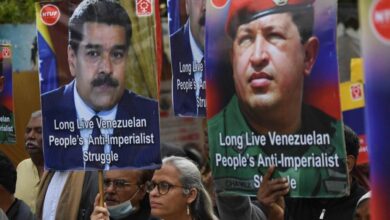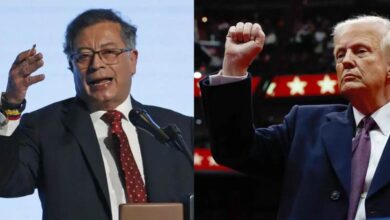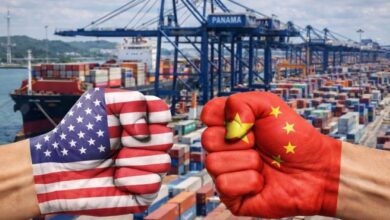Trump’s Caribbean Strike Escalates U.S. War on Venezuelan Narco-Terrorists
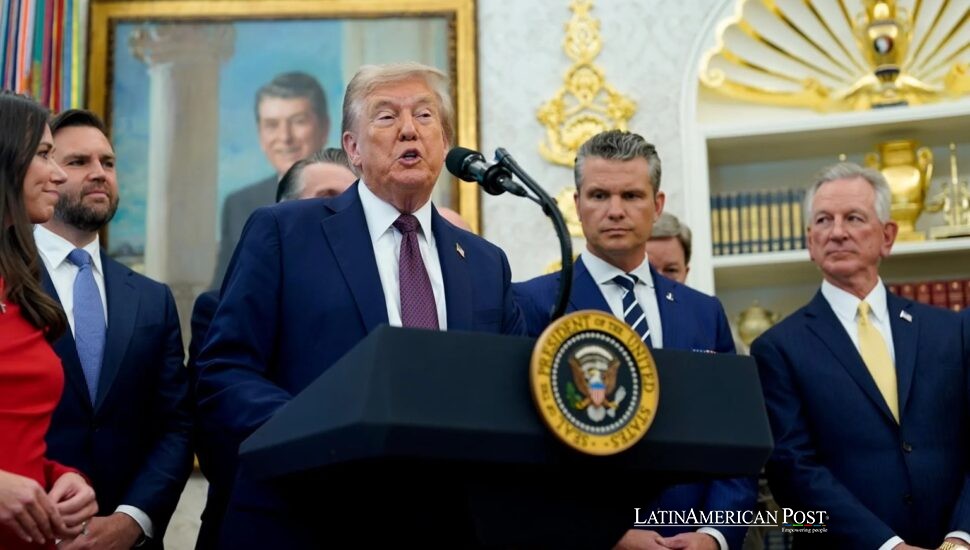
A U.S. military strike that left eleven people dead in the Caribbean has intensified a bold new campaign by Donald Trump to militarize the fight against Latin American cartels. At its center: a mysterious boat, a powerful drone, and a growing regional standoff.
A Presidential Boast and a Burning Boat
The announcement didn’t come from a Pentagon press briefing—it came from Donald Trump’s Truth Social feed. According to the president, the U.S. military had just taken out a vessel allegedly transporting drugs from Venezuela through international waters in the southern Caribbean.
“Let this serve as a warning,” Trump posted. “Eleven terrorists are dead.” The target, he said, was Tren de Aragua, a Venezuelan gang his administration now classifies as a foreign terrorist organization. The group, better known for human smuggling and violent extortion than for transnational cocaine operations, was suddenly at the heart of a high-seas killing.
Secretary of State Marco Rubio confirmed the strike, describing it as a “lethal attack” on a drug-laden boat under gang control. Trump released video footage purporting to show the moment of impact—an explosion in open waters, likely captured by MQ-9 Reaper drones, the kind used for covert surveillance in Mexico.
But questions arrived just as fast.
Venezuela’s Communication Minister Freddy Ñáñez claimed the video looked fabricated, alleging it was generated using artificial intelligence. “Marco Rubio keeps lying to the president,” he said on Telegram. “This isn’t proof. This is propaganda.”
Washington’s response: silence on the details, resolve in the tone.
Tren de Aragua: Gang, Cartel—or Political Pawn?
Trump’s classification of Tren de Aragua as a narco-terrorist organization is central to his strategy. His administration accuses Venezuelan President Nicolás Maduro of overseeing the group, alleging that high-level officials—most notably former VP Tareck El Aissami—are directing its expansion across borders.
But analysts remain skeptical.
A two-year investigation by InSight Crime found no conclusive evidence linking Tren de Aragua to large-scale international drug trafficking. Instead, the gang has become notorious for controlling migrant smuggling routes, operating human trafficking rings, and enforcing brutal street-level extortion across South America.
Still, Trump has repeatedly claimed that the gang is actively flooding the U.S. with narcotics. And he’s not just talking—he’s acting. In August, he signed an executive order instructing the Pentagon to use military assets to go after cartels labeled as foreign terrorists. This order includes authorization for strikes at sea or on land, even without the traditional judicial or diplomatic constraints.
The result is a fundamental shift: U.S. soldiers, not just DEA agents or Coast Guard patrols, are now in the anti-narcotics front line.
Military Muscle in a Legally Gray Zone
Since the order, the U.S. has rapidly deployed forces closer to Venezuelan waters. At least seven warships have been seen in the area—some reportedly with nuclear strike capabilities. According to Reuters, 4,500 Marines have also been mobilized. Their stated goal? “Combat and dismantle drug trafficking, criminal cartels, and foreign terrorist organizations,” said White House deputy chief of staff Stephen Miller.
But the legality of these actions is already drawing fire.
Retired Rear Admiral James E. McPherson warned in The New York Times that military action without the consent of the affected country could violate international law—unless there’s a clear and imminent threat. “You need more than suspicion. You need proof,” he said.
So far, the U.S. has not released the names, nationalities, or evidence of drugs aboard the boat destroyed in Tuesday’s strike. Rubio dodged direct questions from reporters in Mexico City. “If you’re on a boat full of cocaine or fentanyl, you’re a threat,” he said. But offered no further specifics.
Back in Caracas, Maduro publicly denied that U.S. troops had entered Venezuelan waters—but acknowledged the danger. “This is the greatest threat the continent has seen in a century,” he said. “If Venezuela is attacked, we will respond with armed resistance.”

EFE@Aaron Schwartz
Echoes of Panama, Risks of Repeating History
The situation now resembles a familiar—and dangerous—template.
In 1989, the U.S. invaded Panama to capture dictator Manuel Noriega, citing drug trafficking. The U.N. condemned the operation as a “flagrant violation of international law.” During the 1990s, joint U.S.
issions with Colombia and Peru to intercept drug flights led to several wrongful deaths, including the accidental downing of civilian aircraft.
Since then, American military cooperation with Latin America has been tightly constrained, often restricted to advisory roles. But Trump’s executive order cuts through those constraints—and opens the door to offensive strikes in foreign airspace, waters, and possibly land.
The appetite for this strategy isn’t new. For years, analysts say Washington has sought to carry out surgical military operations against cartels in Mexico and beyond. But concerns over sovereignty and blowback have stalled them—until now.
Today’s context is different. With the lines between organized crime, terrorism, and migration increasingly blurred in political rhetoric, the military toolkit is back on the table.
And so is the danger of overreach.
For now, one boat has been destroyed. Eleven people are dead. But what’s left unspoken may matter most: the evidence.
No intercepted communications have been shared. No photos of narcotics seized. No admissions from Maduro’s government. Just a burning vessel, a presidential declaration, and an uneasy silence from Washington.
Also Read: A U.S. Strike Against a Venezuelan Boat at Sea and the War That Isn’t a War
What’s clear is this: a new era of drug war militarization has begun, and the Caribbean is the opening theater. Whether this strategy delivers results—or spirals into a wider conflict—may depend on how many boats are still out there, and what happens when the next one crosses a red line drawn not in law, but in power.

